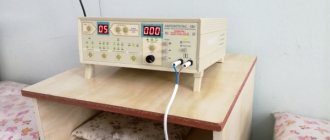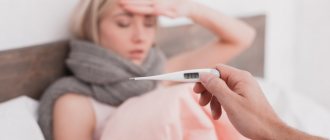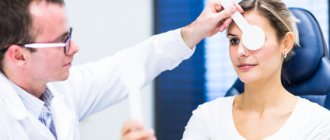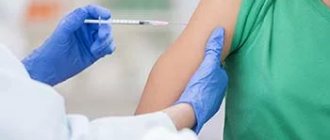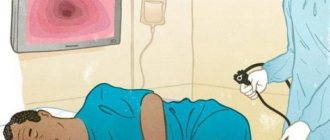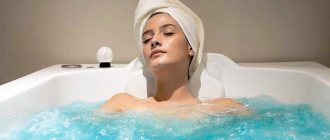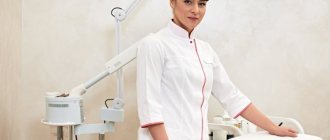Mustard plasters have established themselves as an effective and affordable method of treating various diseases. Despite their simplicity, they have a healing effect. The only condition is their correct setting. The article will discuss in detail how to place mustard plasters on your back to achieve maximum benefits. Their healing properties were first used in Rome and Ancient Greece several thousand years ago. Most often, mustard plasters are used for pathologies of the respiratory system. They can be described as one of the simplest and most effective options for treating a cold.
What are mustard plasters?
Before figuring out how to properly put mustard plasters on your back, let’s look at what they are. So, mustard plaster is a medical product consisting of a sheet of special paper, which is evenly covered with a special type of mustard, or a package consisting of porous bags containing mustard powder. There are four of them on a laminated sheet of paper.
In a high-quality product, the powder mass covering it adheres quite firmly to the paper. When mustard plaster is wetted in water, a specific smell of mustard appears.
Mechanism of action
Redness forms at the point where the dermis touches mustard, and due to the dilation of blood vessels in this area, blood flow increases. In addition, the excitability of the sympathetic nervous system increases, and substances such as sympathin and adrenaline are concentrated in the blood. They provoke an increase in the protective functions of the individual’s body. Such reactions occur in response to a stimulus. Thus, mustard plaster has a local irritating and distracting effect. This is an excellent at-home physical therapy treatment that is accessible to everyone.
Indications and method of use
In order to get the maximum benefit from using this product, you should use it as intended and know how to apply mustard plasters to your back and other parts of the body. Doctors recommend mustard plasters for the following conditions:
- osteochondrosis;
- neuralgia;
- muscle pain;
- myositis;
- pneumonia;
- acute respiratory infections;
- cardialgia;
- bronchitis;
- sprain;
- soft tissue bruise.
This medical product is used externally only. If you use packaged mustard plaster, shake it first so that the powder is distributed evenly. Next, they are immersed in water, preferably warm, and applied with the porous side of the paper to the dermis. Press tightly, covering with a dry cloth, and leave for two to fifteen minutes, depending on age and individual sensitivity. After persistent redness appears, it is removed. The dermis is treated with a soft cloth, wiped dry and, if necessary, cream or Vaseline is applied. Slight redness and a feeling of soreness in the place where the mustard plaster was located may be present for several hours.
STOMACH
Be careful with dairy and sausage products, raw eggs, especially in the absence of a refrigerator. Thoroughly wash purchased and collected from your own garden: berries, vegetables, fruits . Always wash your hands, especially if you have worked in the garden beds.
*If you experience symptoms of food poisoning: nausea, vomiting, diarrhea, immediately follow this regimen:
- take activated carbon or another sorbent - Enterosgel, Smecta - drugs that bind and remove toxins from the body;
- if necessary, take an antidiarrheal and pain reliever;
- if the condition does not improve, call an ambulance.
Contraindications and side effects
The use of this medical device is prohibited when:
- impaired integrity of the skin;
- high sensitivity;
- the presence of blood in the sputum;
- pathologies accompanied by temperature;
- convulsions;
- oncopathology;
- low body weight (wasting);
- for various diseases of the dermis - atopic dermatitis, eczema and others.
Among the adverse reactions, it is worth noting allergic manifestations, pain and severe burning.
The use of mustard plasters for coughs in children. Algorithm for the procedure
This medical product has been successfully used for many decades to treat coughs in children caused by colds. Let's take a closer look at how to put mustard plasters on the back when coughing in small patients.
- Open the package, take the mustard plaster and place it in a saucer with warm water for a few seconds.
- Apply to the skin of the back. If the child is small, then first put a cotton cloth on his back and mustard plaster on it. You can also use a special children's form of the product - “Mustard”.
- Place a warm, dry towel on top and wrap with a warm blanket.
- Hold for about five minutes. Next, remove and treat the reddened dermis with cream.
Such manipulations are carried out for any type of cough, with the exception of allergic ones, and they are especially effective for wet ones. However, there is one unpleasant moment - the procedure causes a feeling of pain caused by the irritating effect of mustard.
Mustard plasters for bronchitis
The place where mustard plasters are placed depends on the ailment that affects the individual. For example, they are very useful in treating bronchitis. However, they must be used correctly. Where to place mustard plasters on the back for this pathology? They are applied to the scapular region without affecting the spinal column. The technique for performing the manipulation is as follows.
- Place the patient on a hard surface.
- Place the mustard sheets or bags in water at a temperature of about 50 degrees for a few seconds.
- Apply them to the area of the shoulder blades and slightly below. Cover with a cloth and a warm blanket. You can also use plastic film for greater efficiency.
- Check the condition of the dermis every five minutes.
- If a strong burning sensation occurs, stop the procedure.
- Keep mustard plasters on an adult patient for about fifteen minutes.
- Remove the products, clean the skin with a damp and then dry cloth. Lubricate with cream.
After this procedure, rest for two hours is recommended.
HEART
People with diagnoses of arterial hypertension, atherosclerosis, and arterial hypertension should not spend the entire day in the garden beds. Therefore, it is recommended NOT to go out into the garden in hot weather from 10 to 16 hours , and also to alternate work and rest: work for half an hour, rest for 15 minutes. Also, you should not work in the beds in a bent position with your head down, diligently loading your heart and blood vessels.
*If you suddenly have a buzzing in your ears, a pounding in your heart, spots appear before your eyes, or your skin is covered in sweat, stop working immediately, sit down or lie down in the shade. If you feel a dull pain in your heart that radiates to your shoulder blade and left arm, take nitroglycerin under your tongue. And it’s better to call an ambulance.
*If you have a sharp headache, a pulsation in your temples, you feel nausea, vomiting, shortness of breath, your vision suddenly worsens, most likely your blood pressure has risen sharply. Take the medicine right away. If possible, measure your blood pressure.
It would be a good idea to have a device for measuring blood pressure at your dacha. And be sure to take with you the pills your doctor prescribed for your blood pressure.
Is it possible to put mustard plasters on the back?
The place where you can put mustard plaster depends on the disease. For example, for tracheitis it is placed on the chest, for laryngitis - on the front surface of the neck, and for bronchitis and pneumonia - on the back. Thus, before using this remedy, you need to clearly know your diagnosis. In addition, you must have the following information. For ailments of an inflammatory nature, they are placed before bedtime, but in other cases, time does not matter. Mustard plasters have a reflex effect - releasing essential oil, irritating nerve endings, warming the dermis.
In the subcutaneous layer, metabolic processes are accelerated and blood flow increases. The same phenomena occur in organs connected by nerves to the dermis. This helps to resolve inflammatory processes and relieve pain. In order for the products to have the maximum effect, you need to know where to place the mustard plasters on your back. In the photo presented in the article you can see their correct placement.
Patient reviews
In terms of effectiveness for colds and muscle pain, mustard plasters are rated highly. Patients note the following advantages:
- Low price and availability (mustard plasters are available in almost any pharmacy).
- A noticeable improvement in well-being and a reduction in the period of illness.
- Mustard plasters are a natural remedy that does not have a negative effect on the body.
- After warming up in this way, sleep improves.
The disadvantages of the product are the following:
- By neglecting safety rules and intending to “endure” severe pain, some buyers received burns, up to the second degree.
- Inconvenient to use. It is quite difficult to put mustard plasters on yourself; someone’s help is needed.
- Children don't like mustard plasters. In any case, the procedure can hardly be called pleasant, so persuading a child to undergo it is not at all easy.
- Marriage occurs. Poor packaging can cause mustard to “leak” through the pores in the bag. This can cause burns or make the procedure completely impossible.
The use of mustard plasters is safe if the described technique is followed. Their effectiveness is a controversial issue. However, it’s definitely worth trying to apply packages in order to evaluate the effect of mustard plasters.
Where do you put mustard plasters for coughs?
A particularly important role for getting rid of cough is played by the correct determination of the place where mustard plasters should be applied. They should be located where the bronchi and lungs are located. To reduce cough symptoms and make breathing easier, they are placed in the area of the shoulder blades and under them on both sides of the spine. The photo shows how to correctly place mustard plasters on your back.
In addition, they must be placed on the chest five centimeters below the collarbones. An adult can have no more than three, and a child can have no more than two medical products in one row. In case of severe cough, to increase blood circulation, mustard plasters can also be applied to the soles of the feet and calf muscles.
Symptomatic therapy
For complex treatment of pneumonia, doctors at the Yusupov Hospital use drugs that affect the mechanisms of development of the pathological process and reduce the symptoms of the disease. These include:
- detoxification agents;
- bronchodilators and expectorants;
- immunomodulators.
Patients with severe symptoms of intoxication are given intravenous infusions of synthetic plasma-substituting solutions (hemodez, reopolyglucin) and protein hydrolysates.
Patients with pneumonia use non-steroidal anti-inflammatory drugs: voltaren, indomethacin, ibuprofen to reduce swelling and improve microcirculation of the lung tissue. In case of a sluggish course of the disease in combination with bronchospastic syndrome, glucocorticoid hormones are used. To improve the drainage function of the bronchi and restore bronchial patency, patients are advised to take bronchodilators (aminophylline, asthmapent, theophedrine, euspiran) and expectorants. At the onset of the disease, with a strong non-productive cough, antitussive drugs (codeine, libexin) are used. An integral component of complex therapy for pneumonia is the normalization of immune defense mechanisms and nonspecific reactivity of the body. To stimulate the immune system (thymalin, T-activin, prodigiosan, gamma globulin, aloe extract).
All patients with pneumonia are prescribed oxygen therapy. In case of severe disease, patients with pneumonia are hospitalized in the intensive care unit. If indicated, they are given artificial ventilation using the latest ventilators.
Symptomatic treatment of pneumonia at home is carried out in order to alleviate the patient’s general condition and level the symptoms of the disease. Doctors at the Yusupov Hospital prescribe mucolytic and bronchodilator drugs to patients. Mucolytics (ACC, carbocysteine and ambroxol) help remove mucus from the respiratory organs. Ambroxol enhances the effect of antibiotics. For inhalation of bronchodilators, patients use nebulizers at home.
Antipyretics (analgin, acetylsalicylic acid or non-steroidal anti-inflammatory drugs) are prescribed only if the patient is intolerant of high temperature. In the room where a feverish patient lies, the temperature should be ensured no higher than 18 degrees and an air humidifier should be installed. To reduce symptoms of intoxication, patients are recommended to drink at least 2.5-3 liters of fluid per day.
During treatment, food that is difficult for the stomach and contains large amounts of fat is excluded from the diet. The diet includes steamed dishes from lean meats and fish, lactic acid products, cottage cheese, and cheese. The menu should include freshly squeezed fruit juices.
Features of the use of mustard plasters in children for coughing
In addition to medications, mustard plasters are used to treat cough. To warm up children, mustard plasters are allowed to be used only from the age of three. To prevent burns to the child's delicate skin, place a layer of gauze soaked in vegetable oil under the mustard plaster. In addition, it is very important to observe the time during which the mustard plaster will remain on the child’s body. Doctors recommend, depending on the age of the child, to keep it:
- 3 minutes from 3 to 5 years;
- 5 – from 5 to 7;
- 10 – from 7 to 9.
And starting from 9 to 16 years old, the time increases to a quarter of an hour. In order for the child not to experience fear, he must be prepared and calmed before the procedure, and turn it into a game. If the burning sensation is very strong, mustard plasters are removed before the allotted time. It is best to warm up before bedtime, so that the child remains in bed later. The procedure is carried out once a day, and the course of treatment does not exceed five days.
Treatment of pneumonia in Moscow
Patients can be treated at home and undergo physiotherapeutic procedures in the rehabilitation department of the Yusupov Hospital: diathermy, inductothermy, microwave, UHF. Resorption of inflammation in the lungs is facilitated by chest massage and physical therapy.
Get advice from an experienced and qualified doctor by calling. Doctors at the Yusupov Hospital treat mild to moderate pneumonia at home. Pulmonologists individually draw up a treatment regimen for each patient, taking into account his individual characteristics and the course of the disease.
Make an appointment
Features of the use of mustard plasters in adults
When using mustard plasters in adults, you need to pay attention to the following points:
- You should not drink alcoholic beverages three hours before warming up.
- During the treatment of cough, smoking should be stopped or significantly limited.
- Mustard plasters are placed directly on the skin and kept for a third of an hour.
- After warming up, stay in bed for two hours.
- Use the procedure only once a day.
The course of treatment in adults lasts 10 days.
LEATHER
Sunburn and tanning greatly increase the risk of developing skin cancer, including aggressive skin cancers such as melanoma. Also, due to exposure to the sun, premature aging of the skin occurs: it becomes less elastic, wrinkles appear. To avoid this, we advise you to use sunscreen when working and relaxing in sunny weather .
Sunscreen should be applied to exposed areas of the body 15–30 minutes before leaving the house. It needs to be renewed every two hours, after a long swim, if you sweat, and also if you dry yourself with a towel.
DO NOT go out into the sun during the period of its greatest activity - from 10:00 to 16:00 hours .
Wear a hat and do not forget to protect your neck, skin around the chin and ears from the sun.
*If you do get sunburned, use the following tips:
- Hide in the shadows immediately. Reddened skin is not a sign that the tan has begun to fade, but symptoms of a first-degree burn. Continued exposure to the sun will only worsen the burn.
- Examine the burn carefully. If you are experiencing severe pain, have a fever, and the area where the blisters have formed is larger than your arm or stomach, consult a doctor immediately. Without treatment, such a sunburn is fraught with complications.
- Attention! To reduce inflammation and reduce pain, there are special products that are sold in pharmacies. Under no circumstances should you smear the affected areas with oil, lard, urine, alcohol, cologne and ointments not intended for the treatment of burns. The use of such products can lead to worsening of the condition and infection of the skin.
- Be extremely careful about sunburn on your face and neck. They can cause swelling and difficulty breathing. Be prepared to consult a doctor immediately if such swelling is observed in a child.
- If the burns are minor, take a cool shower or bath to soothe the pain.
- Regularly moisturize “burnt” skin with special products designed for this.
- While sunburns are healing, wear loose-fitting, long-sleeved, legged clothing made from organic cotton or silk. Rough fabrics or synthetic materials will irritate the skin, causing pain and redness.
- Don't take risks. Until sunburn symptoms have completely resolved and your skin has stopped peeling, do not go out into the sun, even if you use sunscreen. Recovery may take four to seven days.
How to install mustard plasters?
Although mustard plasters have been used for warming up for a very long time, not all young mothers know how to do it. Below is the procedure for placing mustard plasters on the back and chest:
- Before applying it to the body, it is immersed in warm water for five seconds, the temperature of which is 50 degrees.
- Then carefully place it on the chosen place and smooth it so that the mustard powder is evenly distributed.
- After applying all the mustard plasters, the patient is wrapped in a warm scarf and carefully laid on his back.
- Cover the top with a warm blanket.
- After removing the mustard plasters, wipe the skin with a damp, warm towel and lubricate it with a rich cream.
- The patient remains in bed, covered with a blanket, for at least two hours.
Mustard plasters must be removed carefully so as not to damage the skin. For maximum benefit, after the procedure, the patient is given warm tea with milk, raspberries or honey.
Foot mustard baths
For a runny nose and diseases of the upper respiratory tract, in addition to mustard plasters, mustard foot baths help. This is an effective remedy and children like it more. When taking foot baths there is no burning sensation, their effect is softer.
Mustard baths are contraindicated at elevated body temperatures.
To prepare a foot bath you will need 50 grams of mustard powder per 10 liters of water. Water temperature no more than 50 °C.
Dissolve the powder in water and soak your feet up to the middle of your shins for 15-20 minutes. After the procedure, rinse your feet with warm water, wipe dry, and put on warm socks. It is advisable to go to bed immediately, so the procedure is most often performed before bed.
